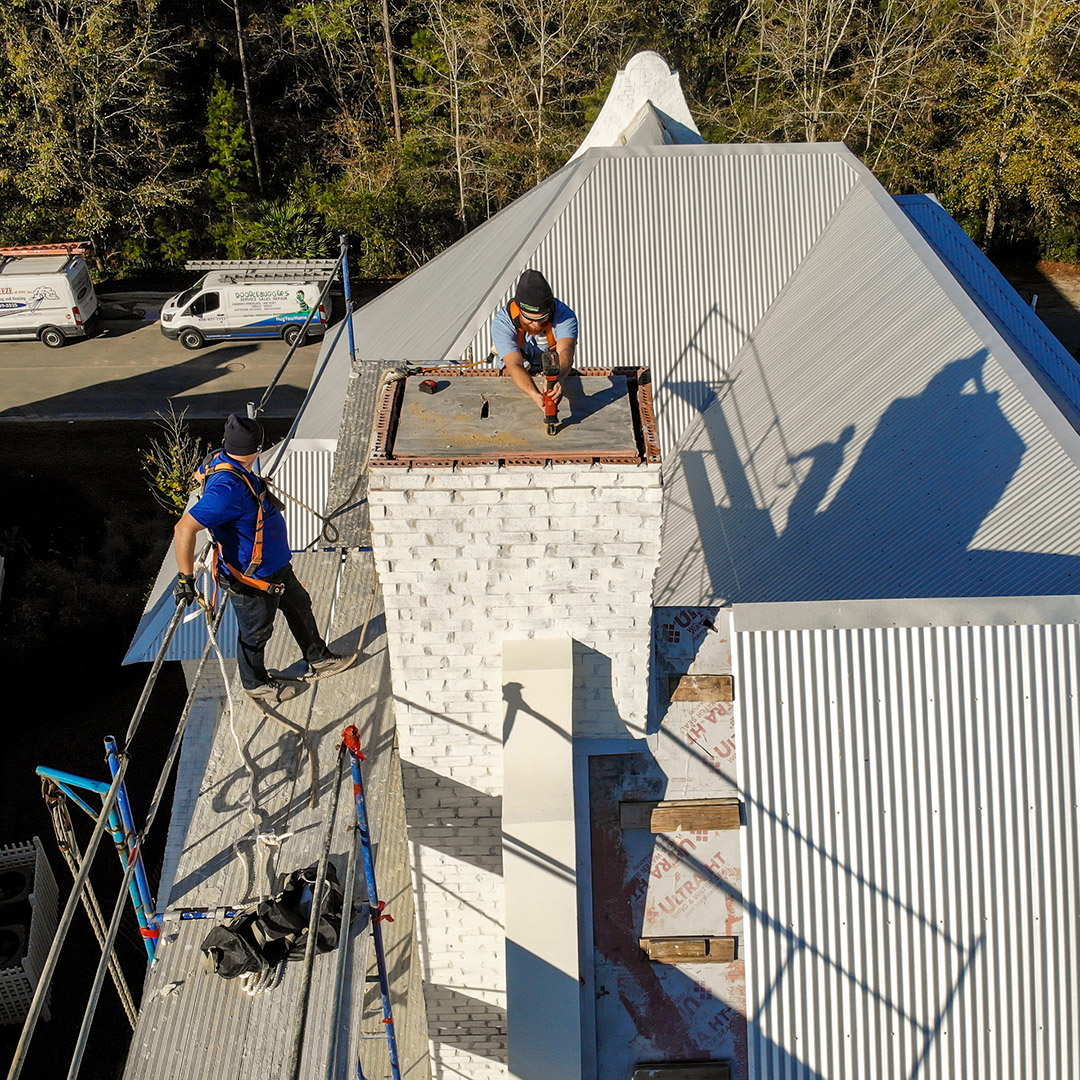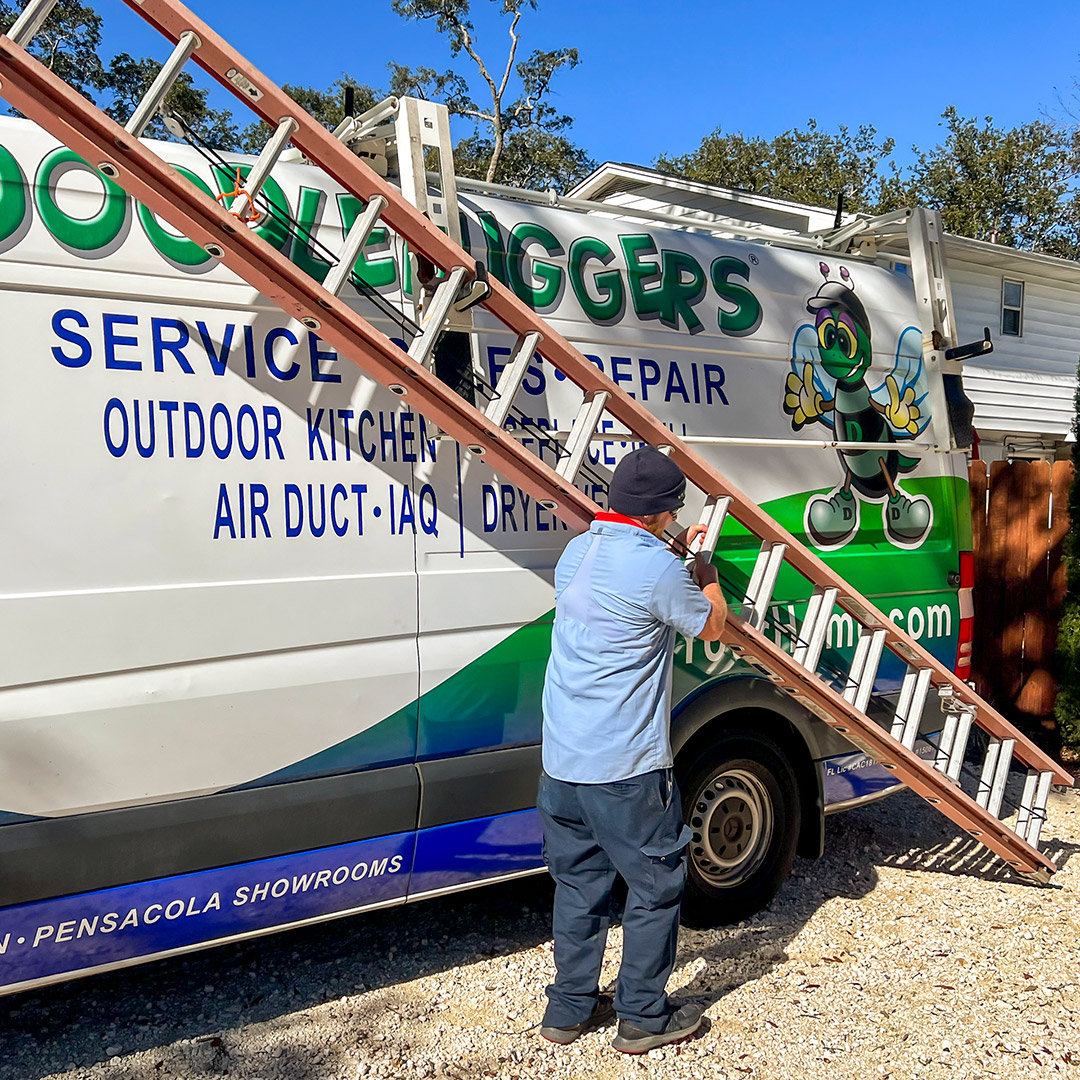- PENSACOLA SHOWROOM: 7555 Highway 98 West, Suite A, Pensacola, FL 32506
- DESTIN SHOWROOM: 36054 Emerald Coast Pkwy #100, Destin, FL 32541
There’s a lot more going on with your chimney than you may realize. Fortunately, you don’t have to fully understand chimney anatomy unless you plan to build or service these components. Still, it’s helpful to be familiar with the basic parts and processes that allow this thing called a “chimney” to do its job.
Doodlebuggers Fireplace, Grill & Outdoor Store of Pensacola, FL, and Destin, FL, would like to share a little about chimney anatomy from a layperson’s point of view.
 From the ground up
From the ground upStarting at the bottom, there’s the ash dump, and below that, a door for removing leftover ashes from the fireplace. The firebox sits above the ash dump. Fireboxes can be used as-built, or they can contain a fireplace insert, which heats and burns more efficiently than most fireplaces.
The fireplace damper above the firebox opens and closes to control the volume of air that moves to and from the firebox. Dampers must be opened fully during a fire to allow for a sufficient draft.
A key component of a chimney system, whether it’s hand-constructed or assembled in a factory, is the flue. This vertical chute runs from the firebox to beyond the roof line at the top of the home. The purpose of the flue is to channel and contain smoke, combustion gases, and sparks.
Housing much of the flue is the exterior chimney structure, typically built from bricks and mortar and collectively called masonry. Problems with the exterior masonry surface lead to many common chimney issues, such as leaking, structural instability, and an unsightly appearance.
Today, all chimney flues are required to have liners. A chimney liner can be made from clay tiles, stainless steel, or a poured-in-place compound. The liner protects the home and those in it from fire, smoke, and the escape of carbon monoxide and other dangerous gases.
Just above the damper area leading to the flue are the smoke chamber and smoke shelf. The smoke chamber looks like an inverted funnel and is designed to efficiently move smoke up into the flue. The smoke shelf serves as a barrier against rainwater, debris, and backdrafts.
The remaining chimney components are at or near the other end of the chimney structure. Chimney flashing is the material that skirts the base of the exterior chimney, blocking the gap between it and the roof. The chimney crown is the slab of (usually) concrete that covers the top of the chimney, minus the flue openings. Chimney crowns protect the chimney interior from tree debris, rain and snow, and small animals and insects.
At the very top of the chimney is a chimney cap or a flue cover. These devices protect the inside of the flue from the above-mentioned debris, rain, and animals. Full-width chimney caps cover all of the chimney top; flue covers cover just the flue opening.
 Maintaining your chimney
Maintaining your chimneyAs you can imagine, with all these components, devices, and areas, a lot can go wrong with a chimney. Because chimneys deal with fire, intense heat, smoke, and combustion gases, it’s important to keep your chimney in tip-top shape.
Doodlebuggers specializes in chimney cleaning, chimney repairs, and licensed chimney inspections. We know how to solve problems with your chimney, and we know how to keep major problems from ever happening.
Reach a Florida chimney expert today at (850) 477-1151 in Pensacola, FL, or at (850) 243-0154 in the Destin, FL, area. You can also get in touch with our handy contact form.